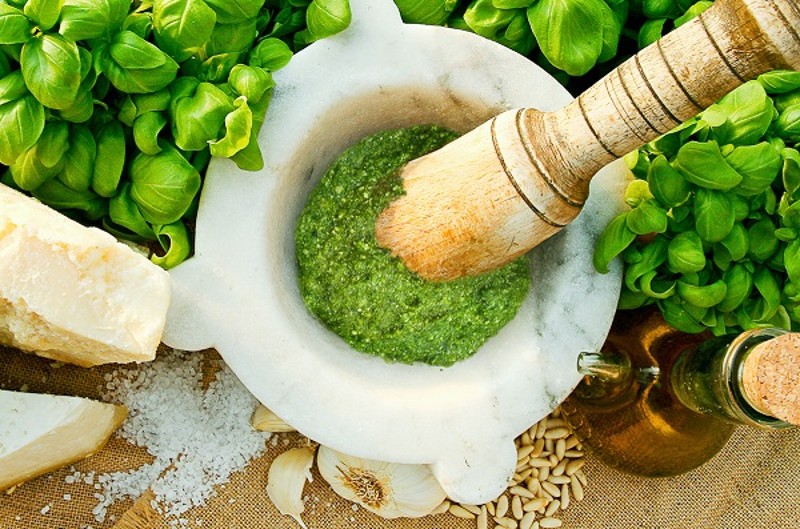
The word PESTO comes from the Italian verb “pestare” which means to crush, to trample, to pound.
In fact, it derives from the old method of preparation, through the pounding of basil leaves inside a mortar made of marble with a wooden pestle. After crushing the basil leaves inside the mortar, add a mix of pine nuts, garlic, salt, ligurian Extra Virgin Olive Oil, pecorino cheese and Parmigiano Reggiano cheese; and your pesto is ready.
In fact, it derives from the old method of preparation, through the pounding of basil leaves inside a mortar made of marble with a wooden pestle. After crushing the basil leaves inside the mortar, add a mix of pine nuts, garlic, salt, ligurian Extra Virgin Olive Oil, pecorino cheese and Parmigiano Reggiano cheese; and your pesto is ready.
This sauce is original of Genoa a city of the Liguria region.
To learn more come to the Italian School of Cooking for a “Pasta Sauces” class
HOW TO USE PESTO – Usually pesto is used to season the pasta hot or in salad. There are many other ways to use it to give flavour and colour to your dishes, remembering that should always be used in small doses:
To give a fragrant flavor to a simple vegetable soup.
Pesto bruschetta: just spread a small amount on toasted bread to make a great dinner appetizer.
Green Pizza: you can sprinkle a bit of pesto on your pizza to add flavour and colour.
To dress baked or mashed potatoes.
Brush a bit of pesto on grilled steak or shrimp to reinvent your ordinary dishes.
Add a touch of pesto to scrambled eggs and you’re on your way to an appealing variation that will add some energy to breakfast.
Pesto is a nice marinade on either chicken or fish.
